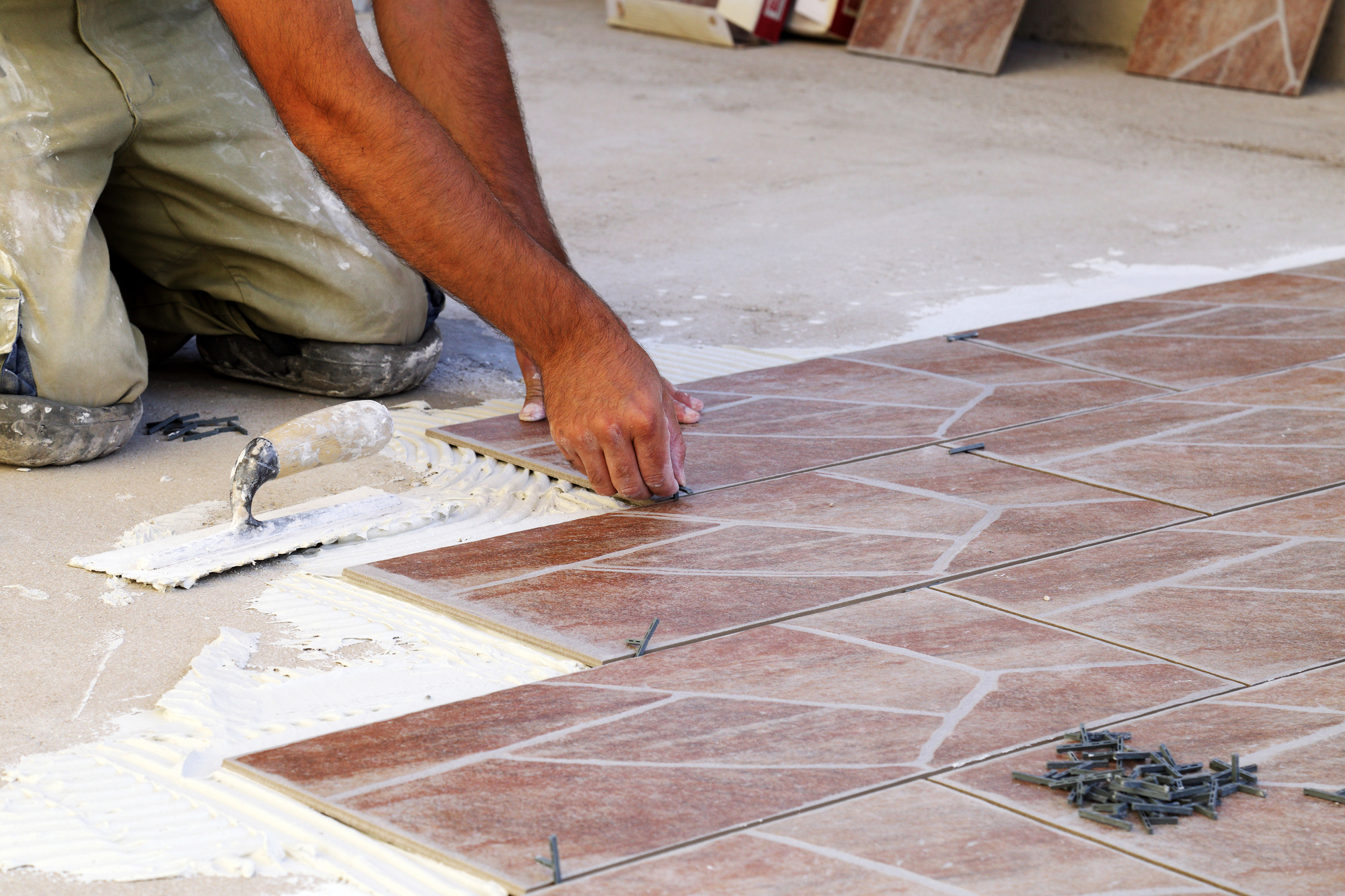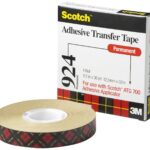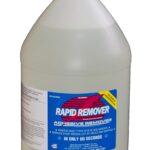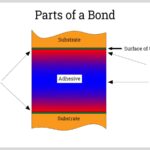Tile adhesive is a type of adhesive used for installing tiles for floors and walls. It typically comes in a thick glue-like paste, and is applied using a trowel. Depending on the size and type of tile, the thickness of the adhesive can vary significantly. For large tiles, the adhesive should be applied at a thickness of around 3 to 4 millimetres. For small tiles, the adhesive should be applied at a thickness of around 1 to 2 millimetres.
It is important to ensure that the adhesive is applied evenly, and is not too thin or thick. It is also important to ensure that the adhesive is applied at the correct temperature and humidity. If the adhesive is too cold or too humid, it will not adhere properly to the surface. The manufacturer’s instructions should be followed for best results. In some cases, a tile adhesive additive may be required. This can be used to improve the adhesion, as well as improve the flexibility of the adhesive. The additive should be added before the adhesive is applied, and should be mixed in thoroughly. Tile adhesive is a necessary part of any tiling job, and it is important to ensure that it is applied correctly in order to achieve the best results. The right thickness and temperature should be observed, and any additives should be added and mixed thoroughly.
How thick should tile adhesive be

Generally, tile adhesive should be between 3mm and 6mm thick. This is because if the adhesive is too thick, it will build up at the grout joints, causing unsightly ridges and bumps. On the other hand, if the adhesive is too thin, it won’t provide enough bonding strength and the tiles could come loose over time. The thickness of the adhesive should be suitable for the type of tiles you are installing. For example, large format tiles may require thicker adhesive than smaller tiles.
Similarly, natural stone tiles may require a thicker adhesive than ceramic or porcelain tiles. It is also important to ensure that the adhesive is suitable for the surface you are applying the tiles to. For example, metal surfaces may require a special type of adhesive, while applying adhesive to damp or wet surfaces may require an adhesive with added moisture resistance. In summary, the thickness of tile adhesive should be carefully considered when installing tiles. It should be between 3mm and 6mm thick, however this may vary depending on the type and size of the tiles, as well as the surface they will be applied to.
How thick should mortar be under tile?
When installing tiles, the thickness of the mortar and adhesive both play an important role to ensure that the tiles stay in place. Mortar should be thick enough so that the tiles can be properly supported and adhere to the surface. Generally, mortar should be between 1/4 and 1/2 inch thick for tile installations. The type of adhesive used should also be considered when determining the thickness of the mortar. If a thick set adhesive is used, the mortar can be as thin as 3/16 inch.
However, if a thin set adhesive is used, the mortar should be at least 1/4 inch thick. In addition to the thickness, the type of mortar should also be taken into consideration. Sanded grout should be used for tiles that are larger than 8 inches, while non-sanded grout should be used for tiles smaller than 8 inches. Although the mortar and adhesive used should provide the same level of support, they should be applied at different thickness levels. The mortar should be thicker than the adhesive and should be spread evenly over the surface. This will help ensure that the tiles are securely held in place. Overall, the thickness of the mortar should be between 1/4 and 1/2 inch for tile installations, depending on the type of adhesive used. It is important to consider the thickness and type of mortar and adhesive when installing tiles in order to ensure the job is done properly.
What happens if tile mortar is too thick?
If the tile mortar is too thick, it can be difficult to apply and will make it harder for tiles to stick. This can lead to tiles not staying in place and falling off of the surface. It can even lead to cracks in the grout or the surface of the tile. Additionally, if the tile mortar is too thick, it will take longer to cure, meaning that it won’t be as durable and strong as it should be. This can cause problems with the integrity of the tile, as well as its ability to resist water damage.
So, if you are wondering how thick tile adhesive should be, it is important to make sure it is not too thick. Ideally, the mortar should be spread evenly, and should be a uniform thickness. This will make it easier to work with and the tiles will stay in place better. It is also important to choose the right type of adhesive for your tile project. Some tile adhesives are better suited for certain types of tiles and surfaces than others. Be sure to consult a professional or read the manufacturer’s recommendation to ensure you choose the right one. Finally, it is also important to take into account the size of the tiles that you are using and the amount of adhesive you will be applying. This will help you determine the right amount of adhesive to use so that it is not too thick. Following these guidelines will help you achieve the best results with your tile project.
What happens if you put too much mortar under tile?
If you put too much mortar under tile, it can cause the tiles to crack or break. This is because too much mortar can put too much pressure on the tile and weaken it, resulting in damage. Additionally, putting too much mortar can cause the grout lines to become uneven, resulting in an unappealing finished product. It is important to ensure that the right amount of mortar is used when tiling. The correct thickness of tile adhesive should be around 3 to 4 millimetres.
If it is any thicker or thinner, it can affect the strength of the tile and cause it to be damaged. When laying tiles, it is best to use a trowel with teeth of the size recommended by the manufacturer. This will help to ensure that the right amount of mortar is used for the tiles. Additionally, any excess mortar should be wiped away during the tiling process. Overall, it is important to make sure that the correct amount of mortar is used when tiling. Too much mortar can lead to weakened tiles and an unsightly finished product. It is therefore important to follow the manufacturer’s instructions for the size of the trowel teeth and the amount of mortar that should be used.
What is the right consistency for tile adhesive?
The consistency of tile adhesive should be thick enough to hold the tile in place and be easily spreadable. It should also have a creamy texture and be able to be spread smoothly. When applying tile adhesive, it should be thick enough that it won’t run off the surface and will stay in place. Typically, this means that the adhesive should be between 1/8 and 1/4 inch thick. Any thicker than this and the adhesive will be too difficult to spread evenly.
Any thinner and it won’t offer enough support and strength for the tile. The right consistency of tile adhesive can also depend on the type of substrate that the tile is being applied to. For instance, if the substrate is a wood surface, the adhesive should be a bit thinner than if the substrate is cement or concrete. It’s important to get the right consistency of tile adhesive because the adhesive is the only thing that is keeping the tiles in place. If the adhesive is too thin or too thick, it can cause the tile to become loose or even fall off over time. With the right adhesive consistency, you can ensure that your tile will stay securely in place for years to come.
Does it matter if you use white or GREY tile adhesive?
When it comes to tiling, the type of tile adhesive you use is very important. Whether you opt for white or grey tile adhesive, it is crucial to make sure the adhesive is of the right thickness. Tile adhesive comes in a variety of thicknesses, so it is important to ensure you select the correct one for your project. Generally speaking, a thicker adhesive is best for heavier tiles that will require more support. On the other hand, lighter tiles require a thinner adhesive.
When it comes to choosing between white or grey adhesive, it is important to consider the overall look and feel of your project. White tile adhesive is typically used in bathrooms and kitchens, as it helps to create a bright and airy look. Grey tile adhesive is used more often for flooring, as it helps to create a more subtle and neutral appearance. Although the adhesive colour matters, it is the thickness of the adhesive that is most important. If the adhesive is not the appropriate thickness, it could lead to the tiles coming loose over time. For this reason, it is essential to choose the right adhesive to ensure your tiling project is successful. Overall, both white and grey tile adhesive can be used, but it is essential to select the right thickness to ensure the tiles stay in place. With the right adhesive, your tiling project will look beautiful and last for many years.
How much height does tile adhesive add?
Tile adhesive adds a thin layer of height to tiles. Generally, the thickness of the adhesive is between 1/8 to 3/16 of an inch. However, this varies depending on the type of adhesive you use. For example, some tile adhesive products are designed to be extra thick, while others are designed to be thin and easy to spread. In most cases, the thickness of the adhesive will not be a major factor in how tall the tiles are.
However, if you are working with very thin tiles, the extra height from the adhesive could be important. Therefore, it is important to read the instructions carefully and adjust the thickness of the adhesive accordingly. Another factor to consider is the substrate or surface that the tiles will be applied to. If the surface is uneven, you may need to use a thicker adhesive to level out the tiles. This is especially important when laying large tiles as even a small difference in height can be noticeable. Overall, tile adhesive provides a thin layer of height, but it is important to choose the right adhesive and adjust the thickness accordingly in order to get the desired result. It is best to read the instructions carefully and follow the advice of the manufacturer, as this will ensure that you get the best outcome.
How thick should tile adhesive be for floor tiles?
How thick the tile adhesive should be when tiling a floor depends on the type of tiles and the substrate. Generally, a thin-set mortar of 1/4 inches should be used for ceramic and porcelain tiles. For heavier tiles, such as stone or marble, a thicker mortar of 1/2 inches is recommended. The substrate also plays a role in determining how thick the adhesive should be. A concrete floor will require a thicker adhesive than a wooden floor.
Make sure to check the manufacturer’s instructions when selecting an adhesive for your project. The adhesive should be applied in a thin even layer across the substrate. Use a notched trowel to spread the adhesive and make sure to cover the entire surface. If the adhesive is too thin, the tile won’t stick properly. If it is too thick, the tile won’t be able to move and flex naturally, leading to cracking or chipping. Finally, it is important to apply the adhesive correctly. Make sure to read the directions carefully and pay attention to the manufacturer’s instructions. This will help ensure that the adhesive is applied correctly and your floor will last for years.
What will happen if too much adhesive is put under the resilient floor tile?
If too much adhesive is put under the resilient floor tile, the tile may be damaged and the floor may become uneven. This can cause the tile to crack or break apart, and can also create a trip hazard. It can also cause the adhesive to expand and lift up the floor, making it more difficult to level out the surface. To ensure adequate tile coverage and a level surface, it’s important to use the right amount of adhesive. Generally, the adhesive should be about 1/8 inch thick when applied to the subfloor.
Too much adhesive can cause the same problems as too little, and may also reduce the tile’s grip on the subfloor, leading to loose or creaky tiles. It’s also important to use the correct type of adhesive for the tile and subfloor. The type of adhesive should be written on the tile or product packaging. It’s also important to follow the manufacturer’s instructions for application, as different products may have different requirements for the amount of adhesive to use. In conclusion, the correct amount of adhesive must be used for resilient floor tile to ensure a leveled surface and prevent any damage. Too much adhesive can cause a range of issues, from uneven floors to loose tiles. Therefore, it’s important to follow the manufacturer’s instructions carefully and ensure an even layer of adhesive when laying the tile.
What happens if tile adhesive is too thick

Tile adhesive is used to secure tiles to the wall or floor. It is important for the adhesive to be of the right consistency for the tiles to stick properly. If the adhesive is too thick, it won’t spread easily and will not provide a secure bond between the tile and the surface. This can also cause a bumpy texture on the surface and make the tiles uneven. Too thick adhesive can also lead to air bubbles between the tiles and the surface, which weakens the bond and can cause the tiles to come loose.
Additionally, too thick adhesive can be difficult to work with, as it takes longer to apply, can be difficult to spread, and can clog grout lines. It is important to check the manufacturer’s instructions on how thick the adhesive should be, as it can vary depending on the type of tile. If the adhesive is too thick, it can be thinned with some water, but this can also change the drying time, so caution needs to be taken. In conclusion, it is important to ensure that the tile adhesive is of the right thickness for best results. Too thick adhesive can lead to tiles not sticking properly and can create uneven surfaces. It is important to check the manufacturer’s instructions to determine the right consistency and adjust if necessary.
What happens if I use too much tile adhesive?
If you use too much tile adhesive, it will take longer for the tiles to properly set. This can lead to tiles that are not properly secured, making them more prone to cracks. In addition, extra adhesive can create an uneven surface, making it difficult to get a smooth finish. If the adhesive is too thick, it will also take longer to dry. This can cause delays in your work, as you may need to wait for the adhesive to dry before you can continue to lay new tiles.
Tile adhesive should be applied in thin layers, using a trowel with the appropriate notches. This will ensure the proper thickness of the adhesive is achieved. Be sure to check that the adhesive has not been applied too thickly, as this will delay the drying time of the adhesive. It is important to use the correct amount of adhesive, as too much adhesive can have a negative effect on the finished look of the tile. If you find yourself using too much adhesive, it is best to scrape off the excess and start over. In conclusion, using too much tile adhesive can have an impact on the finished look of the tile and can also create delays if the adhesive does not dry quickly enough. It is important to use the correct amount of adhesive to ensure the tiles are properly secured and the adhesive has had enough time to set.
What causes tiles not to stick?
Sometimes tiles may not stick properly and there are a few different reasons for this. One of the main causes of tiles not sticking is the type of adhesive that is used. The wrong type of adhesive may not provide enough support for the tile, leading to it not sticking properly. Another cause can be that the adhesive has been applied too thinly. Tile adhesive should be applied in a thick layer to provide enough support to the tiles.
The surface of the area where the tile is being stuck can also have an effect. If the surface is not clean and dry, the tiles are more likely to slip as the adhesive will not adhere properly. Additionally, if the tile is not pressed firmly into the adhesive, the adhesive may not grip the tile properly. Finally, if the adhesive is too old, it may not have the strength to hold the tile in place effectively. Adhesive that is more than a year old may not be suitable for sticking tiles. In summary, it is important to use the right type of adhesive and apply it in a thick layer, as well as ensuring that the surface is clean and dry. Additionally, the tile must be pressed firmly into the adhesive and the adhesive must not be too old. These are all important factors in ensuring that tiles stick properly.
How thick can tile adhesive be laid?
Tile adhesive is used to stick tiles to a variety of surfaces. The thickness of the adhesive used can vary depending on the type of tile, type of surface and the application. Generally, tile adhesive should be laid between 2 and 5mm thick. A thinner layer of adhesive is recommended for lighter tiles such as ceramic tiles, while a thicker layer of adhesive may be needed for larger and heavier tiles such as natural stone tiles. It is important to ensure that the tile adhesive has been applied uniformly and smoothly, so any excess adhesive should be smoothed out using a trowel.
In some cases, a thicker layer of tile adhesive may be necessary. For instance, when tiling to a rough surface or when using a large format tile. When laying thick tile adhesive, it is important to make sure that the adhesive is properly mixed before applying it and that any excess adhesive is removed after the tile has been laid. In order to ensure a successful tiling project, it is important to use the correct amount of adhesive as specified by the manufacturer. Too little adhesive may not provide enough adhesion, while too much adhesive can cause problems such as cracking and warping. Overall, the thickness of tile adhesive can vary depending on the type of tile, type of surface and the application. It is important to use the correct amount of adhesive as specified by the manufacturer for best results.
How thick is too thick for thinset?
The thickness of thinset depends on a variety of factors, such as the type of tile and the type of surface the tile is being applied to. Generally, the thicker the thinset, the stronger the bond will be between the tile and the surface. However, there is such a thing as too thick. If the thinset is too thick, it won’t spread properly and could even cause tiles to become misaligned. In addition, too much thinset can create a lumpy surface that could cause grout or tile to crack or chip.
Most thinset manufacturers recommend using a thickness of 3/16 of an inch for interior tile jobs and 1/4 of an inch for exterior tile jobs. This makes it easier to evenly spread the thinset and create a strong bond. For most tile jobs, using a trowel with notched edges will provide the most consistent thickness. It is important to remember that while there is a recommended thickness for thinset, it is still important to use your judgement. If the tile is small or the surface is uneven, it may be necessary to use a slightly thicker thinset. On the other hand, it is important to avoid spreading thinset that is too thick. Overall, the key to a successful tile job is to use the recommended thickness of thinset for the situation. Too thin, and the bond won’t be strong enough, too thick and it won’t spread properly. Use your judgement, and you’ll be sure to get the job done right.
How much can you build up tile adhesive?
It’s essential to understand how much adhesive should be used to ensure a secure bond between the tiles and the substrate. The thickness of tile adhesive greatly depends on the size of the tile as well as the type of substrate. Generally speaking, the larger the tile and the more absorbent the substrate, the thicker the tile adhesive should be. The ideal thickness of tile adhesive is usually around 3mm to 6mm. However, it is important to take into account the type of tile being used, as well as the weight of the tile, as this can affect the amount of adhesive required.
When using a trowel to apply tile adhesive, it’s important to take care not to spread it too thick or too thin. A good rule of thumb is to apply it evenly, so that there are no areas that are too thick or too thin. This will help ensure a secure bond between the tile and the substrate. In conclusion, it is important to understand the thickness of tile adhesive when undertaking a tiling project. By taking into account the size of the tile, the type of substrate and the weight of the tile, you can ensure the ideal thickness of adhesive is achieved to guarantee a secure bond.
What should the consistency of tile adhesive look like?
Tile adhesive should be a thick paste-like consistency that’s neither too thick nor too thin. When checking the thickness of the adhesive, you should be able to press your finger into it and feel some resistance. If it’s too thick, it won’t spread properly. If it’s too thin, it won’t hold the tiles in place. When applying the adhesive, you should spread it evenly across the back of the tile and make sure that the tiles fit securely in place.
If the tile adhesive is too thick, it won’t be able to provide the right amount of grip and won’t adhere properly. If it’s too thin, then the tiles won’t be able to stay in place. When tiling a wall or floor, you should use the right amount of adhesive on each tile. If the adhesive is too thick, it can create a lumpy finish that won’t look good. If it’s too thin, the tiles may move around. In summary, the ideal tile adhesive is a thick paste-like consistency that provides enough resistance when pressed with a finger. It should spread evenly and provide the right amount of grip and adhesion. Too thick adhesive won’t spread properly, while too thin adhesive won’t hold up the tiles.
How long does thick tile adhesive take to dry?
Tile adhesive comes in various thicknesses, ranging from very thin to very thick. The thickness of tile adhesive is important to consider when calculating how long it will take for it to dry. Thin tile adhesive usually takes about an hour to dry, while thick tile adhesive can take up to 24 hours to dry. The thicker the adhesive, the longer it will take for it to dry completely. In order to ensure that the tile adhesive is completely dry before you start to lay the tiles, it is important to allow the adhesive to dry for the manufacturer’s suggested amount of time.
This will give you the best results and will ensure that the adhesive is fully dry and secure. If you are unsure of how thick your tile adhesive is, you can always consult the manufacturer’s instructions. They will let you know the thickness and how long it should take for it to dry. Once the adhesive is completely dry, you can begin to lay the tiles. Make sure that you follow the manufacturer’s instructions regarding the drying process, as it is very important in order to ensure that the adhesive is fully dry and secure.
How do you remove thick tile adhesive?
Tile adhesive can come in a range of thicknesses, generally ranging from thin to thick. Thick tile adhesive can be more difficult to remove, but it is still possible. The first step in removing thick tile adhesive is to try and scrape it away with a putty knife. This will only work for the more superficial layers, and you may need to use a grout saw or oscillating tool to remove the deeper layers. It is also important to wear protective clothing, such as gloves, as you remove thick tile adhesive.
This will help to protect your hands from any chemicals you may use. Once you have scraped away as much of the thick adhesive as possible, you can use an appropriate adhesive remover to break down the adhesive for easier removal. Be sure to follow the instructions on the remover carefully, and ensure the room is well ventilated. Once the adhesive remover has had time to take effect, you can finish the removal process using a putty knife, grout saw and oscillating tool. With some patience and effort, thick tile adhesive can be removed.
Does heat soften tile adhesive?
Tile adhesive is generally a thick compound used to adhere tiles to the surface they are being installed on. It usually comes in a powder or paste form and is mixed with water to create a thick paste. Does heat soften tile adhesive? In some cases, heat can be used to soften tile adhesive in order to make it easier to spread and adhere to the surface. This is especially true when it comes to thicker tile adhesive, which can be difficult to spread evenly across a surface. If the tile adhesive is too soft, it can lead to the tiles slipping out of place.
In most cases, it is best to apply tile adhesive in its intended thickness and let it dry naturally, rather than applying heat. Too much heat can actually damage the adhesive and make it less effective. It is important to follow the manufacturer’s instructions for the particular tile adhesive being used. This includes how thick it should be applied and whether or not heat should be used. If heat is needed, it needs to be applied carefully at the appropriate temperature. In summary, heat can sometimes be used to soften tile adhesive, but it is important to be aware of the implications and proceed with caution. The best approach is to apply the adhesive in the manufacturer’s recommended thickness and let it dry naturally.
Can you sand down tile adhesive?
It’s usually a thick, paste-like substance that is applied to the substrate before placing the tiles. When it comes to the thickness of tile adhesive, it varies depending on the type and brand of product you use. Generally speaking, it is usually between 1mm and 2mm thick when applied. In some cases, you may need to sand down tile adhesive to create a smoother and more even surface. This can be done using a sandpaper and hand block, which is usually needed if the adhesive layer is too thick.
It is important to note that if you sand down tile adhesive, you should use a respirator to avoid breathing in the dust. This is because the dust particles can be dangerous when inhaled. Overall, whether or not you need to sand down tile adhesive depends on the thickness of the adhesive and the desired finish. If it is too thick, sanding down the adhesive can help create an even and smooth surface.
What happens if you put new adhesive over floors?
Putting new adhesive over existing floors can be tricky, especially if the tile adhesive underneath is thick. The best way to determine how thick the tile adhesive is to remove a few tiles and take measurements. If the adhesive is too thick, it can hinder the new adhesive from adhering properly and can lead to costly repairs and weakening of the floor. If the tile adhesive is thicker than 1/4 inch, it is best to remove the existing adhesive before applying new adhesive. This can be accomplished by scraping and sanding away the old layer.
Once the surface is prepared, the new adhesive should be applied in thin layers to ensure that it fully covers the existing flooring. When applying new adhesive over an existing floor, it is important to take extra caution and make sure that the adhesive is spread evenly and that no air pockets are left. If air pockets are left, it can cause the adhesive to lift and weaken the flooring. It is also important to allow the adhesive to cure properly before walking on it. This will ensure that the tile adhesive is securely attached to the floor and will not come loose over time. Overall, the process of putting new adhesive over existing floors can be tricky, but with the right tools, patience, and precautions it can be done successfully.
What factors affect the adhesive thickness of tile?
The key factors that affect the adhesive thickness of tile are the type of tile being used, the type of substrate the tile is being installed on, and the environment in which the tile installation is being completed. For example, ceramic tiles require a thicker adhesive than porcelain tiles. This is because porcelain tiles are denser, making them less likely to move and requiring less adhesion to hold them in place. The surface type of the substrate the tile is being installed on can also have an effect on the adhesive thickness required. For example, a rough surface may require a thicker adhesive than a smooth one.
Finally, environmental factors such as temperature and humidity can affect the adhesive thickness. In high temperatures, an adhesive may become runny and thinner, while in cooler temperatures, an adhesive may become thicker and more solid. In conclusion, the adhesive thickness of tile can vary depending on the type of tile, the type of substrate, and the environmental conditions. Knowing the right adhesive thickness can help ensure a successful tile installation.
What can go wrong when trying to apply tiles?
It’s important to know how thick the tile adhesive should be when planning your project. If it’s too thick, the tiles won’t stick properly and could eventually come off the wall. If the adhesive is too thin, it won’t form a secure enough bond to hold the tiles in place. This could lead to water seeping into the wall, causing further damage. Additionally, when applying tiles with an adhesive, it’s important to ensure the surface is clean, dry, and free of dirt and dust.
If not, the adhesive won’t stick and the tiles won’t stay in place. Furthermore, the temperature of the adhesive and surface should be considered. If the tile adhesive is too cold, it won’t be able to form a secure bond with the tiles and the surface. Finally, incorrect preparation of the adhesive could result in tiles warping or cracking. If the adhesive isn’t mixed properly, it won’t have the necessary strength for a secure bond. So, it’s important to follow the manufacturer’s instructions when mixing the adhesive.






